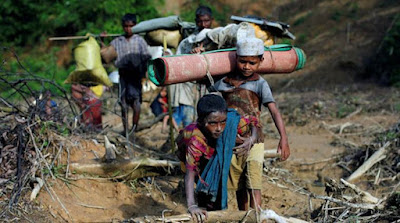Who is Rohingya?
Rohingya people historically also termed Arakanese Indians are now a stateless Indo-Aryan people from Rakhine State, Myanmar. There were an estimated 1.5 million Rohingya living in Myanmar before the 2016-2016 crisis. The majority are Muslim while a minority are Hindu. The modern term Rohingya emerged from colonial and pre-colonial terms Rooinga and Rwangya. The term "Rohingya" may come from Rakhanga or Roshanga, the words for the state of Arakan. The word Rohingya would then mean "inhabitant of Rohang", Which was the early Muslim name Arakan. Andrew Tan argues it comes from the Arabic word Raham (God's blessing) and speculates that early Muslims in Arakan referred to themselves as "God's blessed people".
History of Rohingya People
Rohingya population is concentrated in the historical region of Arakan. By the 4th century, Arakan became one of the earliest Indianized kingdoms in Southeast Asia. Sanskrit inscriptions in the region indicate that the founders of the first Arakanese states were Indian. Hence earlier dynasties are thought to have been Indian, ruling over a population similar to that of Bangal.
Proof of Rohingya in Myanmar
In 1799, Francis Buchanan Hamilton wrote an article called "A Comparative Vocabulary of Some of the Languages Spoken in the Burma Empire". Among the native groups of Arakan, the wrote are the: "Mohammedans, who have long settled in Arakan, and who call themselves Rooinga, or natives of Arakan." The Classical Journal of 1811 identified "Rooinga" as one of the languages spoken in the "Burmah Empire". In 1815, Johann Severin Vater listed "Ruinga" as an ethnic group with a distinct language in a compendium of languages published in German.


Post a Comment